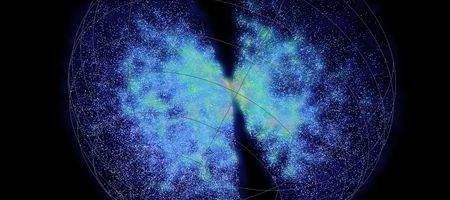An Australian PhD student has produced one of the most accurate measurements ever made of how fast the universe is expanding and thus how big it is.

Florian Beutler, a PhD candidate with the International Centre for Radio Astronomy Research (ICRAR) at the University of Western Australia, has used a new method to calculate the Hubble constant.
This links how fast galaxies are moving with how far they are from us, as the universe continues to expand.
“The Hubble constant is a key number in astronomy because it’s used to calculate the size and age of the universe,” says Beutler.
It’s not difficult to measure the speed and direction of a galaxy – but determining its distance from Earth is much harder. Until now, scientists have been able to make an estimate by looking at the brightness of individual objects within the galaxy and relating this to what they know about its size and composition. It’s an error-prone technique.
But Beutler’s improved the accuracy by drawing on data from a survey of more than 125,000 galaxies carried out with the UK Schmidt Telescope in eastern Australia – the biggest survey to date of relatively nearby galaxies, and covering almost half the sky.
Using a measurement of the clustering of the galaxies surveyed, plus other information derived from observations of the early universe, Beutler says he’s now been able to measure the Hubble constant with an uncertainty of less than five percent. His figure, if you’re interested, is 67.0 ± 3.2 km s-1 Mpc-1.
“The new measurement agrees well with previous ones, and provides a strong check on previous work,” says co-author Professor Matthew Colless, director of the Australian Astronomical Observatory.
The measurement can be refined even further by using data from larger galaxy surveys, say the team.






